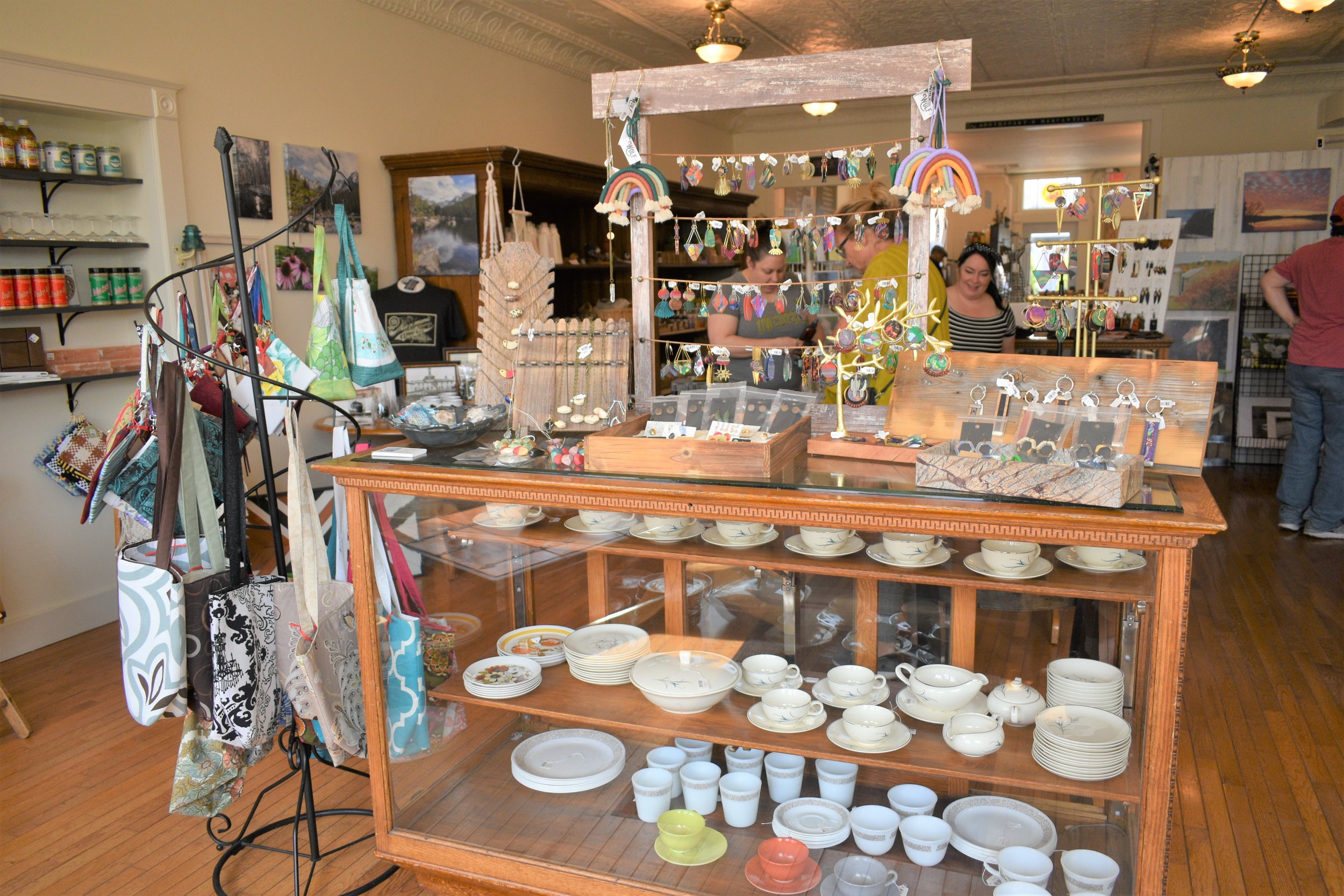DON'T EAT THAT!!!
I love taking photos of wildflowers and interesting bushes or trees when I am fishing. When I do presentations at schools, I love dropping a quick "What they have been used for in the past" description. The next statement is what I typically say to them: "Don't put anything wild in your mouth unless you are 100 percent sure it is ok to." I beat it in to the young folks’ heads that many of the old remedies and so-called cures from these will flowers or berries have been debunked and DON'T EAT THAT!!! For a poison emergency in the U.S. call 1-800-222-1222 Below are some of the pictures I have taken of plants that at one time had medicinal qualities attached to them.
Bells Wort is not very common in Southwestern Wisconsin. I have only run in to a couple times in my vast wanderings. A wort that is more common is St. John's and has proven medicinal qualities. For a poison emergency in the U.S. call 1-800-222-1222 In the past Bells Wort has been made into a tea that was used in the treatment of sore throats, inflamed gums, coughs and scads other ailments. The taste was pungent and unappealing. There is no evidence that Bells Wort has any effect on any maladies. The power of suggestion resulted in some improvement or maybe a placebo effect. When in doubt, don't eat it!!! For a poison emergency in the U.S. call 1-800-222-1222
Prickly Ash has an oil extracted from the bark and berries that was used in the past to cure rheumatism and typhoid and impurities of the blood. The stems and fruits were chewed by the Native Americans in the past to alleviate toothaches because of the numbing effect. Many cures have been debunked and have been shown to have secondary negative effects that outweighed the initial medical qualities. I am going to sound like a broken record here but "Don't Eat That!!"
Wild bergamot was used by many Native Americans in a tea to treat colds and flu. The flower was used in a poultice for skin infections and as an antiseptic for minor wounds. A tea made from the plant was also used to treat mouth and throat infections caused by dental problems. This plant was used for a variety of purposes that varied from stopping farting to clearing up acne. I bet the Snake Oil Salesmen of the old days made some serious jingle on this cure all.
The leaves of the Columbine were used in potions for sore mouths and throats. The seeds taken in wine with a little saffron purport to remove obstructions of the liver and is good for the yellow jaundice. I believe a doctor should be consulted about liver problems. The flowers of various species of columbine were eaten by Native Americans with other fresh greens, and are reported to be very sweet and safe if consumed in small quantities. The plant’s seeds and roots are highly poisonous however, and contain cancerous elements. Don’t ingest these things.
In mythology, bluebells are used by fairies to trap passersby, especially young children. They symbolize death in Britain and are often planted on graves there. The bluebell is a poisonous plant. This one I bet has been tried and it failed miserably as a medicine or folk remedy. The key word that should alert you is "POISON." A friend bought several mushroom identification books a few years ago when he was really into mushroom hunting. It can get pretty confusing in a hurry. I remember when I was a cop and a dad was in the field and picked some mushrooms. He identified them wrong and took them home to his family. He fried them up. He fed them to the family. He went on the internet after supper because his kids gave him such a hard time to show them that the mushrooms were identified correctly. He had misidentified the mushrooms. He had his whole family stick their fingers down their throat. He called to dispatch for follow up. He was referred to Poison Control and we were sent to the residence later to make sure everything was okay. These flowers and berries may be pretty and have some historical medical values but I for one am not willing to be a Guinea Pig. Modern medical science has the FDA to vet medicines and cures for our medical problems. "DON'T EAT THAT!!" For a poison emergency in the U.S. call 1-800-222-1222.
For more of Len’s work visit; https://lenharris.blogspot.com, Small Streams Trout Monsters Club, or www.facebook.com/len.harris.
Visit the American Association of Poison Control Centers.
Len Harris is a retired trout angler from Richland Center, Wisconsin. He was raised in Gays Mills 33 steps from the Kickapoo River. He has fished the streams and rivers of the Driftless for over half a century. He is married and has one daughter.
Len writes for four local newspapers. He has been a staff writer/photographer for Midwest Outdoors Magazine for 14 years. His stories have appeared in many magazines. A couple worthy of note are American Angler Magazine, Our Wisconsin Magazine, Midwest Fly-fishing Magazine, Field and Stream. There are about a dozen more.
Len has written two books: "The Stream of Time" and "Brigadoon Creek". Both are available on amazon. He was a fishing guide for five years. He presented three times at the biggest fishing show in Wisconsin, The Madison Fishing Expo.
Len primarily chases trout but will pursue pike and walleye when the trout fishing is slow.
For more of Len Harris’ work, visit www.facebook.com/len.harris or www.facebook.com/groups/1654997701453820/









